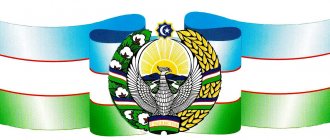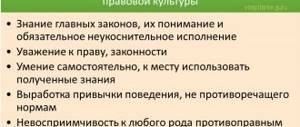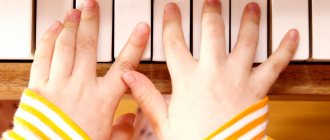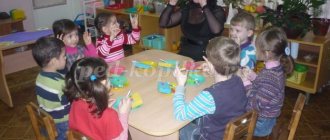Extracurricular work with children with disabilities
Pedagogical classification of children with disabilities
Features of extracurricular work with children with disabilities are related to the specifics of their diseases.
Children with disabilities are children aged 0 to 18 years with physical and (or) mental disabilities who have limitations in their ability to live due to congenital, hereditary, acquired diseases or consequences of injuries, confirmed in the prescribed manner. Based on the pedagogical classification, several categories of violations are distinguished. Hearing impairment (deaf and hard of hearing).
They have persistent bilateral hearing impairment, which makes verbal communication with others through oral speech difficult or impossible.
Visual impairment (blind, visually impaired).
They have an organic lesion of the visual analyzer, which prevents the use of vision in orientation and cognitive activities.
Musculoskeletal disorders.
They have organic damage to the motor centers of the brain, leading to the impossibility or partial impairment of movements of the musculoskeletal system in time and space.
Severe speech disorders.
They have psychophysical abnormalities that cause disorders of the communicative and cognitive (generalizing) functions of speech.
Impaired mental function
. They have a slow rate of formation of higher mental functions, leading to a persistent state of immaturity of the emotional-volitional sphere and intellectual failure.
Intellectual development disorders.
They have organic damage to the brain, causing impairment of higher cognitive processes and persistent irreversible impairment of mental development, primarily intellectual.
Violation of the emotional-volitional sphere
(heterogeneous group, including autism) Have various clinical symptoms and psychological and pedagogical characteristics, leading to impaired development of communication and social skills.
Complex developmental disorder.
Have a combination of two or more primary disorders (visually impaired with mental retardation, hearing impaired with cerebral palsy)
100 parenting mistakes that are easy to avoid
What is this book about? This is the most detailed guide to parental mistakes, ways to avoid and eliminate them. The author examines the most common mistakes that all parents either make or are very afraid to make. You will learn how to: become a true friend to a child without losing your authority; communicate with your child without repeating the mistakes of your parents; respond correctly to the child’s whims and disobedience; satisfy the child’s need for love without spoiling him; develop the child taking into account the characteristics of his personality; instill in your child the correct idea of happiness and success. Who is the author Olga Makhovskaya - a famous psychologist, candidate of psychological sciences, employee of the Institute of Psychology of the Russian Academy of Sciences, VGIK. Fellow of international scientific programs. Director of content for the children's television project "Sesame Street in Russia", author and presenter of programs for parents. Author of the books “American children play with pleasure, French children play according to the rules, and Russian children play until they win”, “How to calmly talk to a child about life, so that later he will let you live in peace.”
Buy
Extracurricular tasks
Rehabilitation and social education of children with disabilities proceeds in three directions.
1. “I am like self-worth.” Problems: inadequate self-esteem, lack of a stable hierarchy of motives and goal setting. Objectives: to form a positive self-concept, that is, confidence in the friendly attitude of other people, confidence in success in various activities and a sense of self-worth.
2. “Me and you.” Problems: speech disorders, impulsiveness, thoughtlessness of actions and inability to think critically about them. Inability to negotiate and focus on the interlocutor. Objective: to develop speech, teach to consciously communicate, cooperate, negotiate, distribute responsibilities, treat other people well and help them.
3. “Me and the world.” Problems: psychological, moral, spiritual immaturity and lack of professional interests. Objectives: through participation in productive socially useful activities, reduce anxiety and fear, develop moral and spiritual qualities, and help decide on a profession.
Forms of extracurricular activities
Individual
. Stimulates the formation of the skill of independent work through conversations with teachers and psychologists, preparation of research and creative projects, solo performances, selection of exhibits for thematic exhibitions, production of manuals.
Circle.
Develops innate inclinations and abilities for creative, scientific, technical, and sports activities. The main thing is that children realize the real result of their work.
Applied mugs.
Crocheting, beading, sewing, carpentry, wood carving, floristry (creating appliqué collages from dried plants). Participation of works in exhibitions, competitions, fairs is desirable. As a result:
- fine motor skills develop
- thinking is activated
- anxiety level decreases.
- professional interests are identified
Aesthetic mugs.
In dance clubs, through dance and improvisation, norms of behavior are taught, which are transferred to society. Theater clubs develop speech and communication by uniting children with disabilities, healthy children and parents into a team to prepare for performances. Music clubs offer choral singing and playing noise instruments. We work with children with musical abilities in individual lessons. Such circles help:
- develop speech
- feel your body
- act in time and space
- freely express feelings and emotions
- realize your ideas
- learn the rules of behavior and constructive communication
- build empathy
- loosen up and increase self-esteem
- develop creative and cognitive activity
Technical and IT circles.
Automobile modeling, rocket modeling, aircraft modeling and ship modeling offer an integrated training system: designing models, participating in competitions, excursions to museums and enterprises, meetings with specialists in the field being studied. The same techniques are used when teaching IT technologies. The result is:
- development of fine motor skills, visual perception, memory, attention
- development of intelligence
- activation of imagination, imaginative thinking, ingenuity
- ability to work with information
- leadership development
- conscious choice of profession
Sections of adaptive sports,
especially sailing and equestrian, implying compliance with high spiritual values. In general the sport:
- shifts the emphasis from “features” of development to the development of abilities
- increases the functionality of the body
- has a beneficial effect on the psyche
- mobilizes will
- expands your social circle
- Gives you the skill to compete
Uniting
. Creates a wide space for communication and develops skills of productive cooperation and collective self-government. Children's clubs: specialized, creative, patriotic. For example, “Intellectual Games Club”, “Ecological Club”. Each club has a name, a charter, operates in sections and on the basis of self-government.
School museums: historical, local history, natural history, historical and literary, art. While collecting material for exhibitions, children participate in hikes and scientific expeditions, work in archives, and correspond. The materials are used in lessons and are introduced to parents, school guests, and residents of the region. Thus, a few years ago, a project, a full-length film “What is the Holocaust?”, created on the basis of a school museum by two tenth-graders, one of them with disabilities, won a city competition in Moscow.
If it's difficult with a child
A new book by a famous family psychologist, winner of the Russian Presidential Prize in the field of education, author of the bestsellers “What to do if ...” and “What to do if ... 2” is addressed to parents of children and adolescents with behavioral characteristics. The publication will help you find a common language with your child, navigate difficult situations and conflicts, get out of them with dignity, maintain patience, restore understanding and peace in the family. Children don't listen to their parents about how much this world is worth. In an attempt to teach a “careless child” how to “behave”, responsible parents arm themselves with the latest psychological “tricks”, learn modern techniques for sitting on buckwheat, and children in response only become more and more irritable and disobedient. What hinders us in our relationship with a child, and what prevents him from behaving better? Lyudmila Petranovskaya’s new book will be useful to parents who are desperate to find a common language with their children. You will be able to learn how to navigate difficult situations, resolve conflicts and come out of them with dignity. The book will help maintain patience, restore understanding and peace in the family.
Buy
Associations such as interest groups, health groups, weekend groups, using a multisensory environment: sensory interactive rooms that correct violations of perception channels.
Massive.
Develops the emotional-volitional sphere, cognitive interests, creative abilities, simultaneously covering a large number of students and parents. Forms of mass work - school and regional concerts and holidays, shows, subject decades, Olympiads, military sports, physical education and health events with the involvement of parents. Participation in all-Russian projects (for example, “Dream Skis”).
Project “Dream Skis”
Educational, role-playing, creative, outdoor games, quest games are also mass work:
- Brain-ring “Path to the Stars”
- Game program “Like Shrovetide Week”
- Military sports game "Zarnitsa"
- Contest of methodological developments “World Health Day”
- “Childhood Holiday” for school-age children in the pediatric traumatology department
The tasks of spiritual, moral, aesthetic, and patriotic education are solved by excursions to museums, art galleries, visits to performances, and concerts. But it is necessary to find out in advance about the availability of special equipment for people with disabilities in the premises and discuss with the guides the specifics of presenting information.
The system of corrective measures for environmental education and health protection includes hikes, excursions to nature reserves and, as animal-assisted therapy, to dolphinariums and oceanariums, visits to stables and sled dog centers.
Cool hours and conversations.
They educate morally, spiritually, in the spirit of a healthy lifestyle. For example, a series of class hours “Nutrition and Health”. Children give presentations on “Healthy Products”, “Vitamins in Our Life”, “Proper Nutrition and Intelligence”. A nutritionist and a chef are invited for a conversation.
- Class hour “Good mood as one of the aspects of a healthy lifestyle”
- Class hour “Kindness and charity in the modern world”
- Class hour “Happiness is in the little things, You need to go and just enjoy life”
The importance of including a child with disabilities in extracurricular and extracurricular activities lies in his successful socialization, the opportunity to realize social, spiritual, moral, aesthetic, and physical needs.
Children with disabilities find themselves in a situation that is as close as possible to the conditions and lifestyle of society, and have every chance to achieve significant success. A big book about you and your child
Every parent has been baffled by their child's behavior at some point.
That is why a large book on education appeared, which contains two bestsellers by the beloved psychologist of millions Lyudmila Petranovskaya. The publication includes the books “Secret Support: Attachment in a Child’s Life” and “If It’s Difficult with a Child.” This book should be read by all parents. And for those who are concerned about slight misunderstandings, and for those who were already desperate to find a common language with children. In it we have collected two books in one: “Secret support: attachment in a child’s life” and “If it’s difficult with a child” - books that can save you and your child from tons of psychological waste paper. Often, when we become adults, we forget that we were once children ourselves. In the first part of the book, based on the scientific theory of attachment, she easily and accessiblely talks about the role of parents on the path to adulthood: “How do dependence and helplessness turn into maturity?” and “How does our love and care, year after year, form in a child a secret support on which, like a pivot, his personality rests?” You will be able to see what actually lies behind children's “whims,” “spoiledness,” “aggression,” and “harmful character.” In the second part of the book, Lyudmila will talk about how to learn to navigate difficult situations, resolve conflicts and get out of them with dignity. You will be able to understand how to help your child so that he grows and develops without wasting energy fighting for your love. Buy
Current and innovative approaches to organizing work with children with disabilities
Educational program of a preschool educational institution, in compensatory groups. (see slide)
Educational program of the preschool educational institution, in groups of a general developmental orientation, in groups of a combined orientation there are two programs
If there is one child with disabilities in the group, then the kindergarten works according to the basic educational program, and an adapted educational program is written for this child. If in kindergarten there is a group with similar impairments, for example, speech, vision or musculoskeletal disorders, then an adapted basic educational program is written for the whole group of compensatory orientation, because the tasks will be similar for the entire group of children.
Register of sample basic general education programs.
Both AOOP and AOP are developed on the basis of the Federal State Educational Standard and approximate adapted educational programs posted on the Federal State Register and Firo website.
Despite modern close attention to the problem of accompanying children with disabilities, today the preparation of adapted programs and their implementation by educational organizations causes serious difficulties. This is explained by the fact that there is still no clear opinion whether it is necessary to write an AOP for each child or whether one can be used for a group of pupils with the same psychological, medical and pedagogical conclusions and similar recommendations.
In addition, regulations are constantly reviewed and changed. The administration of the preschool educational institution needs to closely monitor this and be able to not only correctly interpret the changes, but also implement them effectively.
So,
The Ministry of Education and Science of the Russian Federation approved Order No. 1014 dated August 30, 2013 “The procedure for organizing and implementing educational activities in basic general educational programs - educational programs of preschool education,” which was amended on January 21, 2020.
Compensating groups.
The number of children in compensatory groups should not exceed
Combined groups.
The number of children in combined groups should not exceed
It is allowed to organize multi-age groups of compensatory or combined orientation for children from 2 months to 3 years and from 3 years and older, taking into account the possibility of organizing a daily routine in them that corresponds to the anatomical and physiological characteristics of children of each age group, with a maximum occupancy of 6 and 12 people, respectively.
When forming combined groups, mixing more than 3 categories of children with disabilities is not allowed; When bringing together children with different developmental disorders, the focus of adapted educational programs for preschool education and the possibility of their simultaneous implementation in one group are taken into account.




